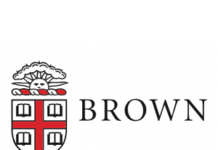 A new report from Drexel University in Philadelphia has highlighted the challenges facing minority and low-income youth with autism. Although autism occurs in children from all backgrounds, the impacts of autism are not felt equally across all groups. Youth from poorer households have fewer options for services, fewer work experiences, and generally worse outcomes than youth from more well-off households. Minority youth often face obstacles accessing needed care and often experience worse outcomes.
A new report from Drexel University in Philadelphia has highlighted the challenges facing minority and low-income youth with autism. Although autism occurs in children from all backgrounds, the impacts of autism are not felt equally across all groups. Youth from poorer households have fewer options for services, fewer work experiences, and generally worse outcomes than youth from more well-off households. Minority youth often face obstacles accessing needed care and often experience worse outcomes.
“We must understand that many families parenting teens on the autism spectrum are also struggling to make ends meet while trying to navigate complex systems of care and get the help their children need,” said Dr. Paul Shattuck, program director of the Autism Institute’s Life Outcomes Program and lead author of the report. “Moving the needle to improve young adult outcomes will require us all to acknowledge that we cannot disentangle helping youth from helping families – and that families have unique needs depending on their financial status. We cannot assume that programs developed to help relatively affluent families will work for financially disadvantaged families.”
For the report, researchers looked at national data on youth ages 12-23 during their secondary school years. They found that nearly half of teens of the autism spectrum live in households with incomes at or below 185 percent of the federal poverty level (about $45,000 for a household of four). One in four lived in a home that received at least one form of public assistance. Additionally, they found that African American teens with autism were more likely to have difficulty than their peers in several areas including communication, self-care and adaptive behaviors, and obtaining independent living arrangements
“Inadequate preparation during the last few years of high school can hinder success on many fronts: physical health and mental health, employment, continued education, friendships and integration into community life,” said Dr. Shattuck “Students do not always receive transition planning, or sometimes it begins too late in high school to allow for adequate preparation. Community-based help is not always available after high school and this leaves many families struggling to navigate on their own and results in too many who are failing to launch successfully into adulthood.”
The full report, The 2018 National Autism Indicators Report: High School Students on the Autism Spectrum, may be accessed here.








